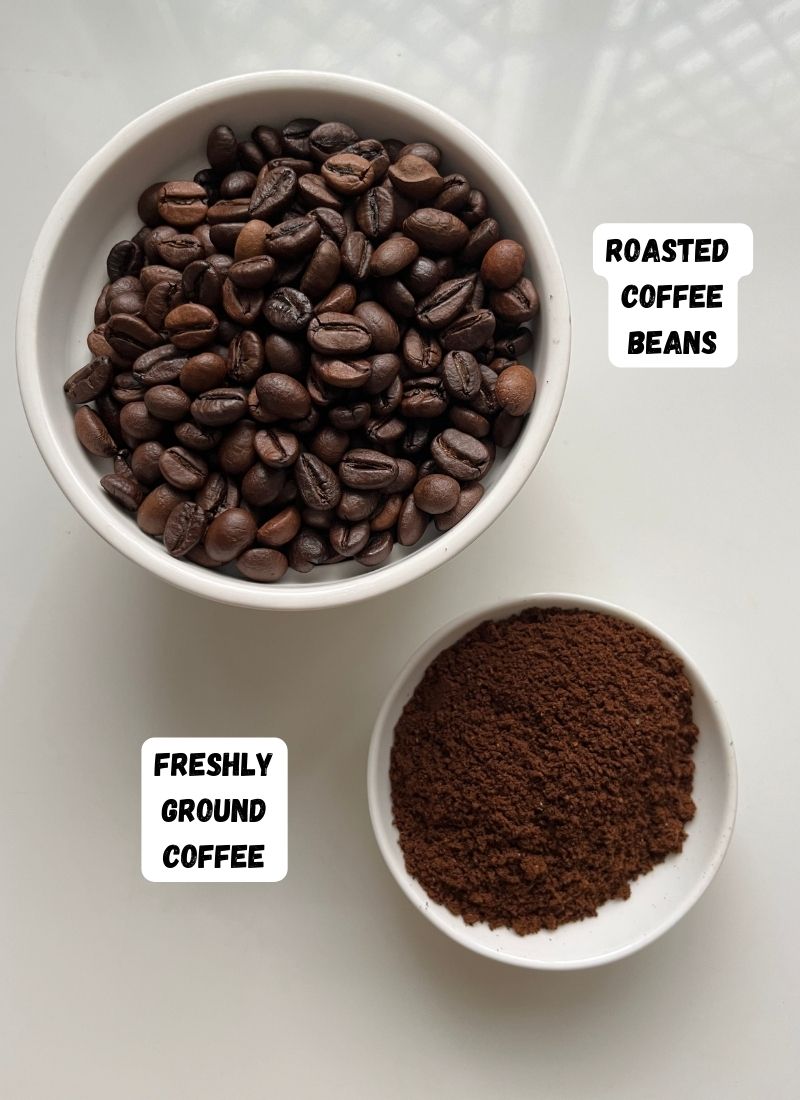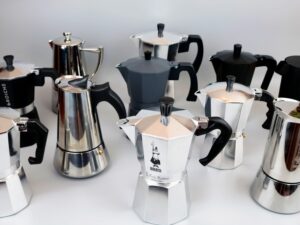There’s nothing like the smell of freshly roasted coffee. By mastering how to roast coffee beans at home in a pan, you can create rich, aromatic brews and control the roast level for your perfect cup every time.
Roasting coffee beans in a pan is simple, affordable, and lets you control the flavor from start to finish. In this guide, you’ll discover easy steps to roast coffee beans perfectly right on your stove. Ready to unlock a new level of coffee enjoyment?
Keep reading, and soon you’ll be brewing coffee that tastes like it came from your favorite café—only better.
Choosing The Right Green Coffee Beans
Choosing green coffee beans is the first step to great homemade coffee. Green beans have not been roasted yet. They hold the true flavor potential of the coffee. Picking the right beans affects how your coffee tastes after roasting.
Green coffee beans come in many types and qualities. Each type offers a different flavor profile. Knowing what to expect helps you select beans that suit your taste. Here’s what you need to know about green coffee beans.
Types Of Coffee Beans
There are mainly two types of coffee beans: Arabica and Robusta. Arabica beans are sweeter and have a softer taste. They often have fruity or floral notes. Robusta beans are stronger, more bitter, and contain more caffeine. They create a heavier and richer coffee.
Choosing Arabica beans is common for home roasting. They provide a smoother and more complex flavor. Robusta beans work well for those who prefer bold and intense coffee. Some blends mix both types for balance.
Factors Affecting Flavor
The flavor of green coffee beans depends on several factors. The region where beans grow changes their taste. Altitude matters too; higher places produce beans with brighter acidity. Soil type and climate also play a role in flavor development.
Freshness of green beans impacts the final roast. Older beans lose aroma and taste. Proper storage keeps beans fresh longer. Look for beans that are clean, uniform in size, and free from defects. These details improve your roasting results.
Preparing Your Equipment
Preparing your equipment is the first step to roasting coffee beans at home. Having the right tools makes the process easier and safer. A few simple items will do the job well. Proper preparation helps you get the best flavor from your beans.
Selecting The Best Pan
Choose a heavy pan with a thick bottom. Cast iron pans work very well for roasting coffee beans. They heat evenly and keep a steady temperature. Avoid pans with thin bottoms, as they can burn the beans. A pan about 10 to 12 inches wide gives enough space for the beans to move.
Additional Tools Needed
You will need a wooden spoon or spatula to stir the beans. Stirring keeps the beans roasting evenly and prevents burning. A colander or metal strainer helps cool the beans after roasting. Have a bowl ready to hold the roasted beans. Use an oven mitt to protect your hands from heat. A timer or clock helps track roasting time precisely.
Setting Up Your Roasting Space
Setting up your roasting space is the first step to roast coffee beans at home. A good space helps you roast safely and enjoy the process. Choose a spot with enough room for your pan and tools. Keep the area clear to avoid accidents. Organize everything before you start. This saves time and keeps things smooth.
Ventilation Tips
Roasting coffee beans produces smoke and strong smells. Open windows or doors to let fresh air in. Use a fan to push smoke outside. Avoid roasting in small, closed rooms. A kitchen with a hood fan works well. Good airflow keeps the air clean and fresh.
Safety Precautions
Roasting coffee beans involves heat and fire. Keep a fire extinguisher nearby. Avoid loose clothes that can catch fire. Use oven mitts to handle hot pans. Stay focused and never leave the pan unattended. Keep children and pets away during roasting. Clean up spills quickly to prevent slips.

Credit: makezine.com
Step-by-step Roasting Process
Roasting coffee beans at home is simple and rewarding. It lets you enjoy fresh coffee with a flavor you control. Follow these clear steps to roast beans in a pan. Each step helps you get the best taste and aroma.
Heating The Pan
Start by heating a heavy pan on medium heat. Let it warm evenly for about 2 to 3 minutes. A thick pan works best to avoid burning the beans. The right temperature is key for even roasting.
Adding And Stirring Beans
Add a small batch of green coffee beans to the pan. Stir constantly with a wooden spoon or spatula. Keep the beans moving to roast them evenly. Stirring prevents burning and helps the heat spread.
Monitoring Color And Smell
Watch the beans change color from green to yellow, then light brown. The smell will shift from grassy to nutty and toasty. Listen for the first crack sound, like popcorn popping. This signals the light roast stage.
Cooling The Beans
Once the beans reach your desired roast level, remove them from the pan. Spread them on a baking sheet or plate to cool quickly. Stir often to release heat and stop the roasting process. Cooling preserves flavor and prevents over-roasting.
Roast Levels And Flavor Profiles
Roast levels shape the flavor of coffee. Each level brings unique tastes and aromas. Knowing these helps you pick the right roast for your brew. Roasting coffee at home lets you explore these flavor profiles. You control the roast level to match your taste.
Light Roast Characteristics
Light roasts keep most original bean flavors. They taste bright and slightly fruity. Acidity is higher, giving a crisp, fresh feel. The color is light brown, with no oil on beans. They have a mild body and a clean finish.
Medium Roast Characteristics
Medium roasts balance acidity and body. Flavors become richer with hints of caramel or chocolate. The beans turn medium brown and show little oil. This roast suits many brewing styles well. It offers a smooth, balanced cup.
Dark Roast Characteristics
Dark roasts have bold, strong flavors. They taste smoky, with bitter and chocolate notes. Beans are dark brown or black with shiny oil. Acidity drops, while body feels heavier. This roast works well for espresso and rich coffee lovers.

Credit: www.yummytummyaarthi.com
Storing Your Roasted Beans
After roasting coffee beans at home, proper storage keeps them fresh and tasty. Freshly roasted beans release gases and can absorb moisture easily. Storing them right preserves flavor and aroma for several days. Let’s explore how to store your beans correctly.
Best Containers
Use airtight containers to keep out air and moisture. Glass jars with tight lids work well. Metal tins with seals also protect beans. Avoid plastic bags or containers that let air in. Containers with one-way valves allow gases to escape without air entering.
Ideal Storage Conditions
Store beans in a cool, dark place away from sunlight. Heat and light make beans lose flavor quickly. Avoid places near ovens or windows. Room temperature is best, not too warm or cold. Keep beans dry and away from strong smells. Coffee beans absorb odors, which changes their taste.
Grinding And Brewing Tips
Grinding and brewing your roasted coffee beans at home brings fresh flavors and better taste. The right grind size affects how water flows through the coffee grounds. This changes the taste and strength of your coffee. Brewing methods also play a big role. Each method needs a certain grind size and time to get the best cup. These tips help you enjoy your homemade roasted coffee.
Choosing The Right Grind Size
Coarse grind works well for French press and cold brew. It lets water pass slowly without over-extracting. Medium grind suits drip coffee makers and pour-over. It balances flavor and extraction time. Fine grind fits espresso machines and Aeropress. It extracts quickly and gives strong flavor. Use a burr grinder for even sizes. Avoid blade grinders, which make uneven pieces.
Brewing Methods To Try
Try French press for a rich, bold cup. Steep coffee for about four minutes, then press. Pour-over offers clean, bright coffee. Pour hot water slowly over grounds in circles. Cold brew uses cold water and long steeping. It creates smooth, less acidic coffee. Experiment with Aeropress for quick, strong coffee. Adjust grind size and brewing time for taste.

Credit: 90scoffee.vn
Troubleshooting Common Issues
Roasting coffee beans at home in a pan can be fun and rewarding. Still, some common problems might come up. Knowing how to fix these issues helps you get better coffee every time. Here are solutions for common roasting troubles.
Uneven Roasting
Uneven roasting happens when some beans cook faster than others. Stir the beans often to move them around. Use a pan with a heavy bottom for steady heat. Keep the heat medium, not too high. This helps all beans roast evenly and taste better.
Burnt Beans
Burnt beans taste bitter and sharp. Avoid high heat because it burns beans quickly. Stir the beans constantly to stop burning. Remove the beans from heat as soon as they reach the right color. Let them cool fast to stop cooking further.
Lack Of Flavor
Beans with weak flavor may not roast long enough. Roast until you hear the first crack sound. This means the beans are releasing flavor. Use fresh beans for better taste. Store roasted beans in an airtight container to keep flavor fresh.
Frequently Asked Questions
How Long Does It Take To Roast Coffee Beans In A Pan?
Roasting coffee beans in a pan usually takes 10 to 15 minutes. Stir constantly to ensure even roasting and avoid burning. The beans change color and emit a nutty aroma when done.
What Type Of Pan Is Best For Roasting Coffee Beans?
A heavy-bottomed skillet or cast iron pan is ideal for roasting coffee beans. It distributes heat evenly and retains temperature, helping achieve consistent roast results. Avoid thin pans that cause uneven roasting.
How Can I Tell When Coffee Beans Are Perfectly Roasted?
Look for a medium to dark brown color and a cracking sound during roasting. The beans release a rich aroma, and the surface may have a slight sheen. Avoid burning or under-roasting by monitoring closely.
Is It Safe To Roast Coffee Beans At Home In A Pan?
Yes, roasting coffee beans at home in a pan is safe with proper ventilation. Use medium heat, stir constantly, and roast in a well-ventilated area to avoid smoke buildup. Always stay attentive during the process.
Conclusion
Roasting coffee beans at home in a pan is simple and fun. You can enjoy fresh coffee with your own touch. Just watch the beans and stir often for even roasting. Experiment with time to find your perfect roast. Freshly roasted beans make coffee taste richer and fresher.
Give it a try and enjoy the aroma filling your kitchen. Home roasting saves money and adds a new hobby. Start small, be patient, and enjoy every cup you make.







